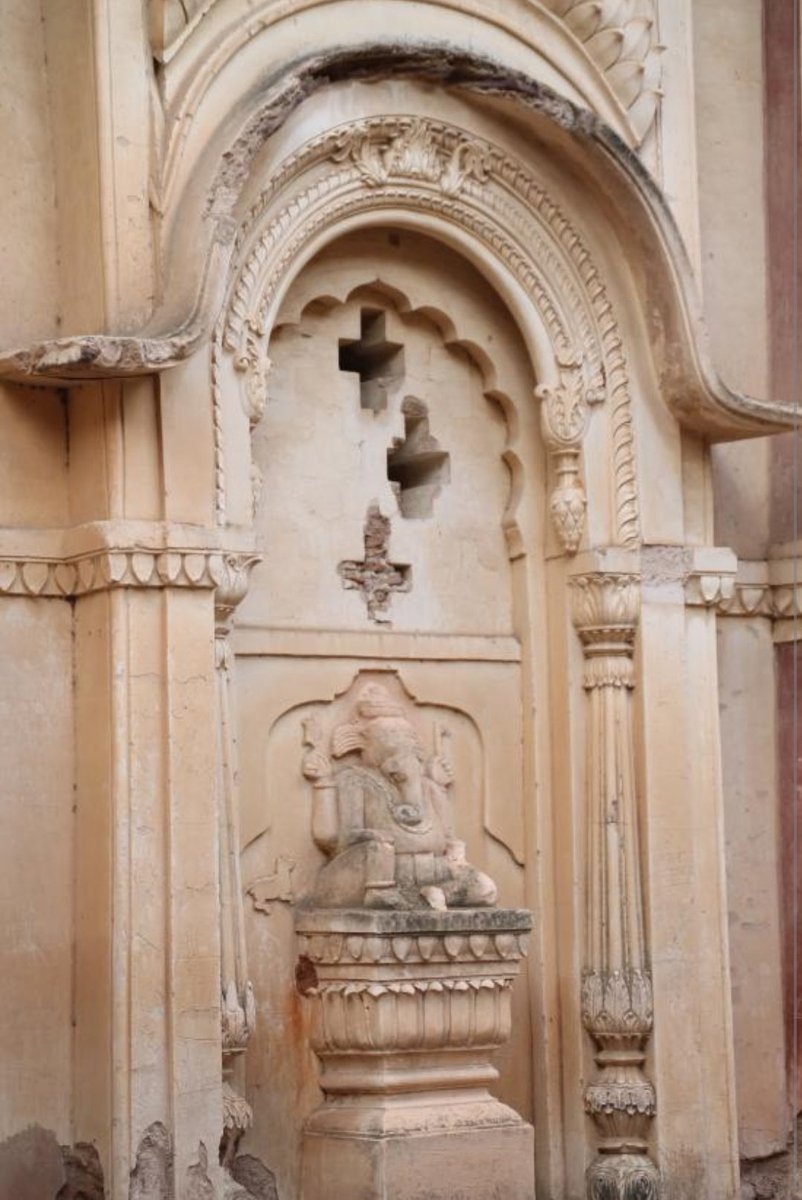The #LakshmanaTemple is a 10th-century Hindu temple built by Yashovarman located in Khajuraho, India. It is dedicated to Vaikuntha Vishnu - an aspect of God Vishnu. It is a Sandhara Temple of the Panchayatana.
1/1
#HistoryEncyclopedia #TemplesOfIndia #temples #History

1/1
#HistoryEncyclopedia #TemplesOfIndia #temples #History


Entire #LakshmanaTemple complex stands on a high platform (Jagati). Its shikhara is clustered with minor urushringas (a subsidiary tower springing from sides of the main shikhara tower in the Hindu temple architecture of northern India.)
2/2
#HistoryEncyclopedia #TemplesOfIndia
2/2
#HistoryEncyclopedia #TemplesOfIndia

The sanctum contains 4-armed & Tri-Headed sculpture of Vaikuntha Vishnu. The central head is of human & two sides of Varaha & Narasimha.
#LakshmanaTemple, #Khajuraho India
3/3
#HistoryEncyclopedia #TemplesOfIndia #History #Temples
#LakshmanaTemple, #Khajuraho India
3/3
#HistoryEncyclopedia #TemplesOfIndia #History #Temples

The steps leading up to the #LakshmanaTemple have a superbly ornate series of toranas, or entrance gateways. These show the crocodile-like sea monsters known as Makaras, swallowing or spitting out a long line of maidens.
4/4
#History #HistoryEncyclopedia #TemplesOfIndia
4/4
#History #HistoryEncyclopedia #TemplesOfIndia

In the three cardinal niches of the wall are incarnations of God Vishnu, 📷1: Varaha in the south, 📷2: Narasimha on the west, and 📷3: Hayagriva in the North.
5/5
#HistoryEncyclopedia #LakshmanaTemple #TemplesOfIndia #Temples #History #Twitter


5/5
#HistoryEncyclopedia #LakshmanaTemple #TemplesOfIndia #Temples #History #Twitter



• • •
Missing some Tweet in this thread? You can try to
force a refresh






































